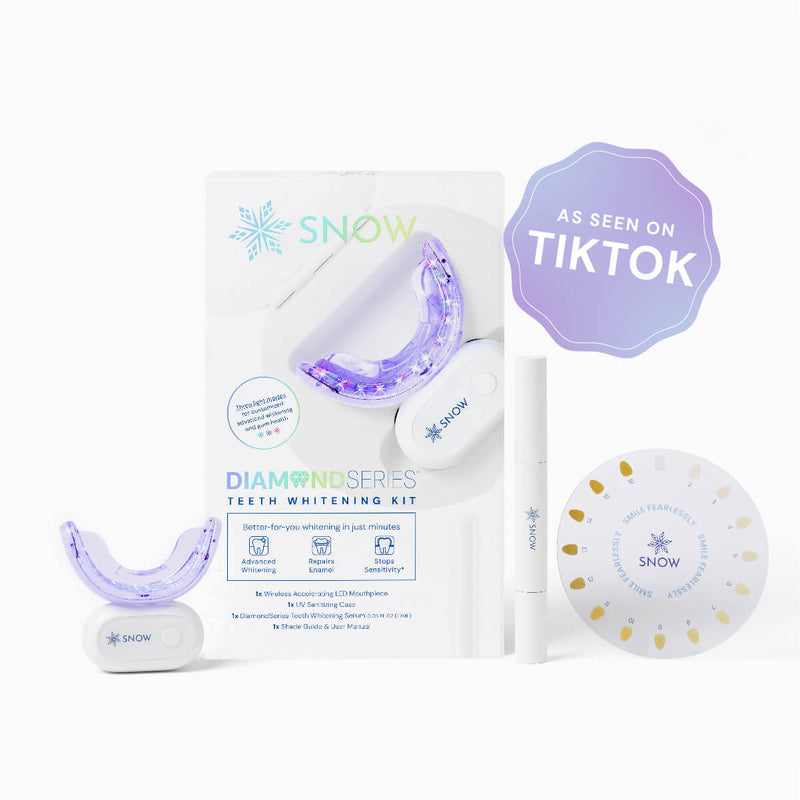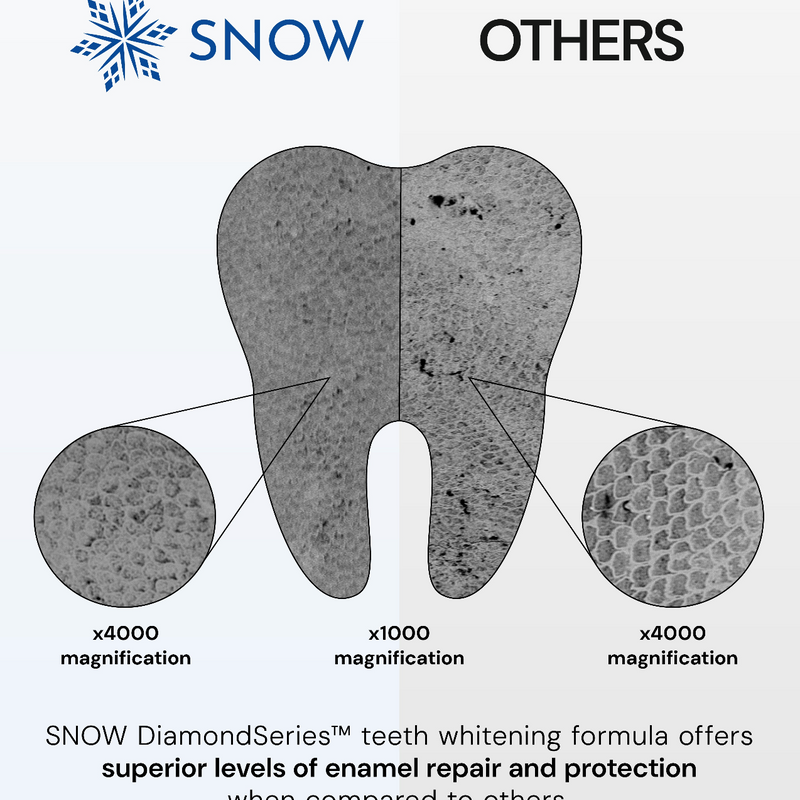Your braces will straighten your teeth and give you a confident smile. However, you cannot deny that, while they are trying to straighten your teeth, they might cause significant discomfort at first.
Wires and brackets might irritate the delicate inside of your mouth, such as your cheeks and lips. However, you don't have to endure the discomfort.
Dental wax for braces gives immediate relief for all of your uncomfortable braces issues. Here's all you need to know about it.
WHAT IS CARNAUBA WAX OR BRACES WAX?
Tooth wax, ortho wax, and braces wax are all names for dental wax.
The wax soothes the mouth's soft tissues that may become irritated by dental appliances.
Traditional braces, clear aligners, retainers, and other dental devices with sharp edges can cut, scrape, or irritate the lips, gums, tongue, inner cheeks, and other sensitive areas when new braces rub against them. Dental wax products help relieve cutting and sores from these orthodontic appliances. Carnauba wax gently sits in your mouth and tends to be the best wax to reduce irritation for its durability and taste protecting you.
HOW DOES DENTAL WAX WORK TO RELIEVE PAIN?
Metal or transparent ceramic brackets support metal wires that travel over the surface of the teeth in orthodontic braces. Clear aligners are custom-molded to go around the exterior of your teeth, all the way to your rear teeth. Brackets, wire ends, and aligner edges can occasionally brush against sensitive tissue within the mouth, causing discomfort.
Your tongue and cheeks are especially sensitive early in your treatment since they haven't yet become acclimated to the touch of the new materials in your mouth. You can use dental wax to soothe these spots until they toughen up. Cover a bothersome bracket or end of a wire or place it on the aligner to protect your cheeks, mouth, and lips from abrasions.
The dental wax forms a smooth protective barrier between your mouth, and the irritating rough or sharp edge.
HOW TO USE AND REMOVE DENTAL WAX
Cut a pea-sized piece of dental wax and press it onto the bracket or sharp edge that’s causing you pain.
Make sure you have thoroughly cleaned and dried your teeth before applying the wax to ensure that it stays in place.
Roll the wax between your fingers to soften it and make it easier to mold to the metal framework.
When you apply the wax, you should feel temporary relief on your soft tissue and your mouth's sensitive areas.
If it doesn't work and the pain persists, peel it off, reapply it, or apply more. For optimal pain relief, ensure that it creates an entirely smooth surface.
Peel off the dental wax to remove it. If necessary, use an interdental stick, a toothpick, or a piece of floss.
When removing dental wax, take care not to break your dental appliance.

THE ADVANTAGES OF DENTAL WAX FOR BRACES
The sensation of having your braces puncture the inside of your mouth is painful, and not being able to see your orthodontist as soon as possible is even more unbearable. Wax for braces comes very handy in this circumstance.
There is a chance that the metal can dislodge and injure the inside of your mouth, in which case the dental wax will come in handy.
It also relieves pain from damaged and painful teeth and protects against the sharp edges of a shattered tooth.
DENTAL WAX DO'S AND DON'TS
It is simple to apply dental wax! However, there are a few factors to bear in mind. You don't want to use too much or leave it in for too long, for example, and you don't have to worry if you accidentally swallow a piece of wax.
So here are a few dos and don'ts for using dental wax like a pro.
HOW TO APPLY DENTAL WAX TO BRACES
- Use roughly the size of a pea-sized chunk of wax. Please wash your hands, then rub them between your fingers to soften them. Then shape it into a thick wax disk.
- Before applying the ball of wax, floss and brush your teeth to ensure a clean surface and to avoid trapping plaque against your tooth.
- Place the wax over the bracket hurting your mouth and gently press your finger around the wax. If necessary, use your tongue to smooth over and better place the wax.
- If necessary, you can also leave the wax on the bracket overnight.
- You can drink beverages or consume soft meals while your bracket is waxed.
- Use the wax to temporarily cover a damaged wire or bracket, but call your dentist immediately for emergency repair.
- Use your fingers or a toothbrush to remove the orthodontic wax.
HOW TO NOT USE DENTAL WAX
- Using too much ortho wax at once can obstruct chewing or speech and come off more easily.
- Never use the same piece of wax twice. Throw it away once you've removed it.
- Use no more than two days of the same wax. It can trap plaque on your teeth and bacteria buildup from food particles within the wax. Regularly replace the wax!
- If food becomes stuck in your mouth after applying the wax, do not keep the wax in your mouth. After flossing and brushing thoroughly, remove and replace it.
- If you accidentally swallow orthodontic wax, don't worry. It should not harm your digestive tract because it is natural.
- Use a fork or toothpick to remove the wax, not a sharp or pointed object. You risk damaging the wire or bracket beneath.
- Be sure to fix a broken wire or bracket before your next appointment. Call your dentist to see if you need to come in for an emergency repair.
CONCLUSION
Braces are an excellent investment in straightening or aligning your teeth, but they can be highly uncomfortable initially. Brace wax will assist you in seeking comfort while wearing braces.
Before using it, remember that it is only a temporary solution to the pain caused by your braces. As a precaution, you should always consult your orthodontist before proceeding.
FAQS
CAN YOU EAT WHILE WEARING DENTAL WAX?
No, you should not eat when using dental wax. Food might adhere to the wax and become dislodged. If you must try chewing on the opposite side of where the wax is placed.
If you consume dental wax, you may be confident that it is non-toxic. Iff you mistakenly ingest a bit of this material, it’s unlikely to harm you.
CAN YOU SLEEP WHILE WEARING DENTAL WAX?
Yes, you can sleep with dental wax on your teeth. Many people put tooth wax on their dental appliances before sleeping to help them sleep better.
Swallowing a small piece of wax while sleeping will not make you sick. Dental wax is generally very safe in small amounts.
WHAT IS DENTAL WAX USED FOR?
Braces wax, also known as Orthodontic Wax, is used to relieve pain caused by rubbing braces appliances. It creates a barrier between the wires of your braces and your mouth.
WHAT KIND OF DENTAL WAX CAN I PUT ON A BROKEN TOOTH?
Apply paraffin wax to the sharp edges of a broken tooth. The wax will keep your fractured tooth from injuring the sensitive skin within your mouth, avoiding inflammation or infection. You can keep replacing the paraffin wax until you can finally visit the dentist's office.

























